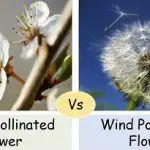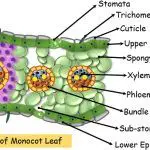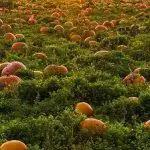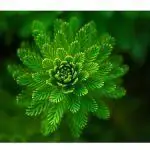The insect-pollinated and wind pollinated flowers highly vary in their structural appearance. The flowers are large-sized for insect pollination with vibrant bright colour petals. These flowers possess many nectar glands that continuously release the nectar. For this reason, they have a very sweet and fragrant smell. These all factors make the flower attractive for the … [Read more...] about Difference Between Insect Pollinated and Wind Pollinated Flowers
Botany
Difference Between Monocot and Dicot Leaves
We divide angiosperms into two main categories that are monocot and dicot. The leaf acts as a location where photosynthesis occurs for both of them. But both of their leaves vary immensely concerning the structure, characteristics and orientation. The monocot leaf on one side is isobilateral in nature. Whereas the dicot leaves are dorsiventral. The monocot leaves are … [Read more...] about Difference Between Monocot and Dicot Leaves
Difference Between Meristematic and Permanent Tissue
Just like animals, plants too have a unique and complex living pattern that is made possible by the numerous tissues making up their body. Plant tissues are classed as meristematic or permanent based on their structure, location, orientation, and function. Meristematic tissues are made up of identical types of cells that are constantly diving, differentiating, and … [Read more...] about Difference Between Meristematic and Permanent Tissue
Difference Between Creepers and Climbers Plants
Creepers and Climbers are plants with weak stems and hence cannot grow erect, so, they grow with the support of either an object or horizontally along with the soil. 'Creepers' as the name says, expand horizontally along with the soil, whereas 'climbers' grow erect by holding up any object. There are many examples of these types of plants, like watermelon is creeper while … [Read more...] about Difference Between Creepers and Climbers Plants
Difference Between Auxin and Gibberellin
The type of plant hormone that controls the cell elongation in plants during phototropism and gravitropism is known as Auxin. Another type of plant growth hormone 'Gibberellin' regulates the seed germination shoot elongation, flower, and fruit maturation. Such important biochemicals that influence plant growth and cell differentiation, tissues, and organs under various … [Read more...] about Difference Between Auxin and Gibberellin





